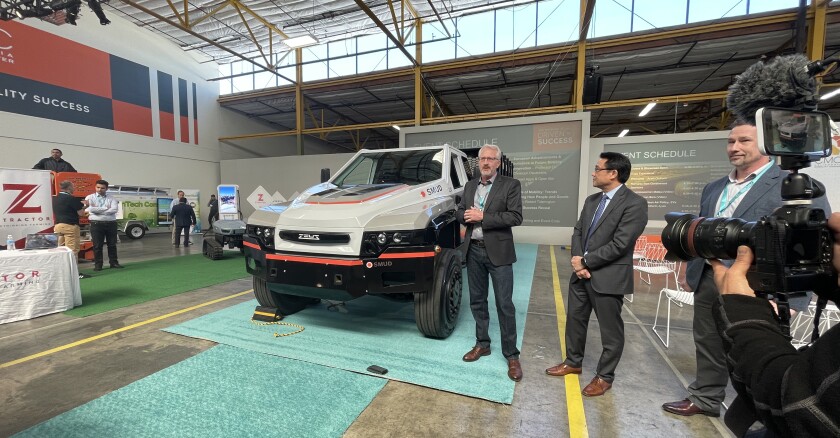The California Air Resources Board (CARB) will consider the Advanced Clean Fleets regulation at the Oct. 27 meeting, which would put in place a framework to require fleets — both public and private — to transition to zero-emission vehicles, starting in 2024.
The rule would also move up the deadline requiring all new medium- and heavy-duty vehicle sales to be zero emission from 2045 to 2040.
The Clean Fleets regulation, which would impact fleets ranging from the likes of Amazon and the U.S. Postal Service to much smaller city and county governments, would advance innovation in the electrification of vehicles at all sizes and price points, industry watchers say. The rules would also move the Golden State — and others following its lead — down a path of more robust electrification across the transportation sector.
“It’s the most significant transportation-related regulation in probably all of our lifetimes. It’s going to be transformative on a scale that’s really, just immense,” said Sean Cocca, director of compliance at Gladstein, Neandross & Associates (GNA), a southern California consulting firm specializing in fleet management.
The clean fleets rule would apply to everything from heavy-duty pickups and drayage trucks to light-duty package delivery vehicles.
“There is a large pool of vehicles, and companies, and motor carriers that this rule is going to affect,” said Cocca.
Starting in 2024, 50 percent of the new heavy-duty vehicles purchased by public agency fleets would need to be zero emission, according to the proposal, increasing to 100 percent by 2027. Exceptions could be made for a lack of availability for a particular type of vehicle, such as fire trucks.
Companies with fleets of vehicles like box trucks, step vans and more common vehicles would need to be on a path toward zero emission as well. Starting in 2025, 10 percent of the fleet would need to be an electric version.
“You don’t have to retire 10 vehicles. You just have to make sure that 10 percent of your fleet is zero emission,” said Cocca, adding the percentage climbs to 100 percent by 2035.
The new proposed rules governing the transition of fleet vehicles to zero-emission vehicles tracks with CARB’s recent passage of the Advanced Clean Cars II regulation, which will phase out the sale of new internal combustion engine cars, trucks and SUVs by 2035. The regulation is seen as the most far-reaching move taken by any state to fundamentally transform the transportation sector.
CARB’s actions, according to Liane Randolph, chair of the California Air Resources Board, should be seen as “strong, enforceful regulations that send clear market signals to manufacturers, alongside strategic investments that support technology development and deployment, and ensure an equitable transition to zero-emission vehicles.” These comments were made at the recent Veloz summit.
There are some 955,700 heavy-duty pickups and vans in operation within California fleets, according to an analysis by the Natural Resources Defense Council. Add to this another 53,000 buses and more than 626,000 work and freight trucks like cement mixers and bucket trucks. All told, more than 1.8 million vehicles in California would be affected by the proposed Clean Fleets regulation.
The transition of so many vehicles — across all classes ranging from personal cars to tractor-trailer rigs — will automatically open up other conversations around a need for more charging infrastructure as well as grid management.
Southern California Edison (SCE), one of the largest utilities in the nation, predicts an electric need for 75 percent of passenger vehicles, two-thirds of medium-duty and one-third of heavy-duty vehicles on California highways in the coming two decades, said Caroline Choi, senior vice president for corporate affairs at SCE. This equates to 26 million cars, 900,000 medium-duty vehicles and 170,000 heavy-duty vehicles.
All three big utilities in California, which includes SCE, have clean electrification incentive programs to help with infrastructure, said Lawren Markle, senior manager of communications strategy at GNA.
“And we think that’s really forward thinking,” he added. “And it will probably spread to other utilities across the nation.”
Editor's note: An earlier version of this story referenced a lower adoption figure than outlined in policy. That figure has been corrected.









